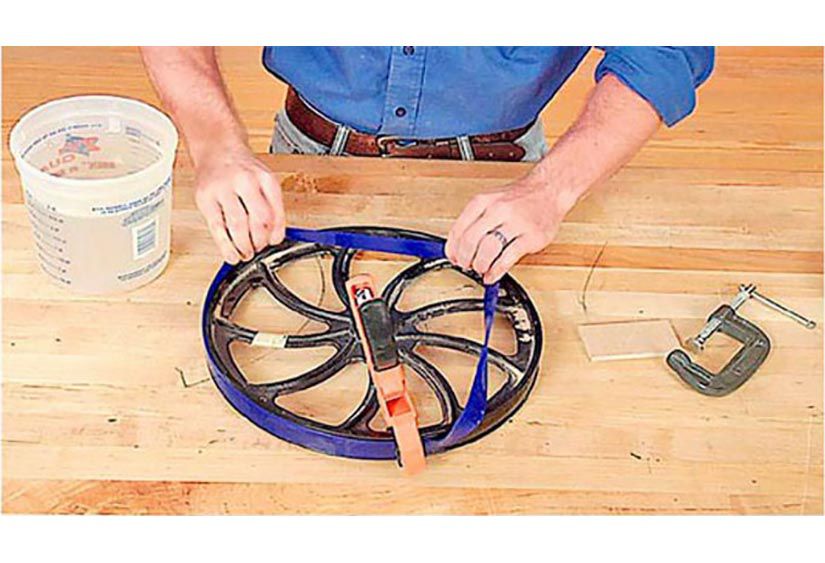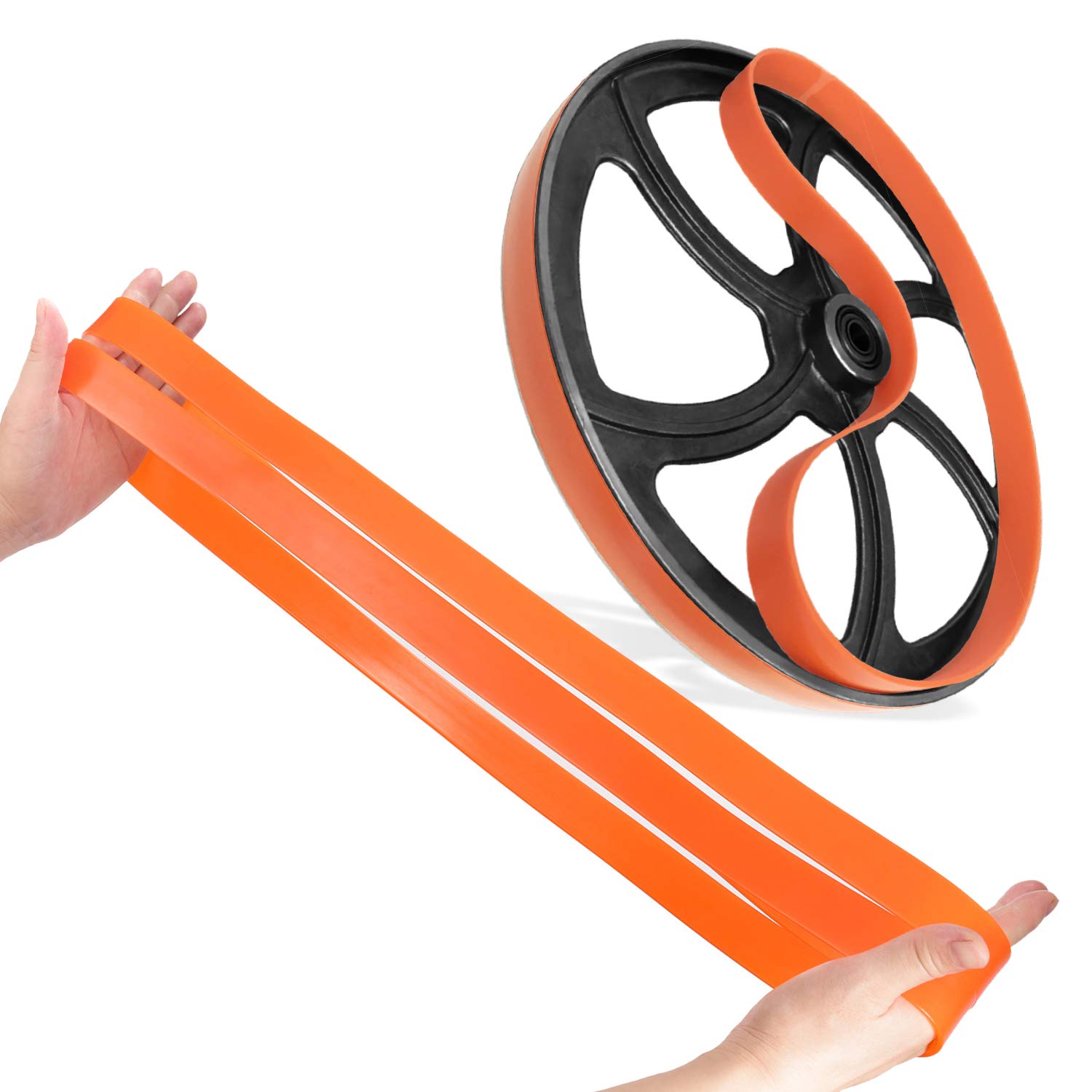Do bandsaws need tires? If you’re curious about this question, you’ve come to the right place! Bandsaws are versatile tools commonly used for woodworking, metalworking, and other tasks. But when it comes to bandsaw maintenance, the topic of tires often arises. In this article, we’ll dive into the world of bandsaw tires and explore whether or not they are necessary for this mighty machine.
Bandsaws are like the muscles of the woodworking world. They power through thick pieces of wood, effortlessly creating smooth cuts. But just like any hardworking tool, bandsaws require some TLC to maintain their performance. One aspect of bandsaw maintenance is the tires. Now, you might be picturing rubber tires like on a car, but bandsaw tires are a bit different.
So, why the need for tires on a bandsaw? Stay tuned as we unravel the mystery and discuss the importance and functions of bandsaw tires. Whether you’re a seasoned bandsaw user or just getting started, understanding the role of tires is key to optimizing your machine’s performance. Let’s get rolling and dive into the world of bandsaw tires!

Do Bandsaws Need Tires?
In the world of woodworking tools, bandsaws are an essential piece of equipment. These versatile machines are used to make curved cuts, resawing, and cutting various materials. One common question that arises among bandsaw users is whether bandsaws need tires. In this article, we will delve into the importance of bandsaw tires, their function, and whether or not they need to be replaced.
Understanding Bandsaw Tires
Before we tackle the question of whether bandsaws need tires, it is important to understand what bandsaw tires are and their purpose. Bandsaw tires are rubber rings that fit around the wheels of a bandsaw. They provide a smooth surface for the blade to run on, ensuring accurate and precise cuts. Tires also act as shock absorbers, reducing vibrations and noise during operation.
There are two types of bandsaw tires: solid and urethane. Solid tires are made of a dense rubber material and are commonly found on older bandsaws. Urethane tires, on the other hand, are made of a durable synthetic material that offers better traction and longevity. While both types of tires serve the same purpose, urethane tires are generally considered superior due to their ability to withstand wear and tear.
The Importance of Bandsaw Tires
Now that we understand what bandsaw tires are, let’s delve into why they are essential for the proper functioning of a bandsaw. Bandsaw tires provide traction and grip for the blade, allowing it to move smoothly and effortlessly along the wheels. Without tires, the blade would slip and slide, resulting in inaccurate cuts and a higher risk of accidents.
Bandsaw tires also play a crucial role in reducing vibrations. As the blade spins at high speeds, it can create vibrations that affect the stability and accuracy of the cut. The rubber or urethane material of the tires absorbs these vibrations, resulting in smoother and more controlled cuts.
Additionally, bandsaw tires act as a protective layer for the wheels of the bandsaw. Over time, the constant contact between the blade and the wheels can cause wear and tear, leading to damage. Tires act as a barrier, preventing direct contact between the blade and the wheels and extending the lifespan of the machine.
The Lifespan of Bandsaw Tires
Now that we understand the importance of bandsaw tires, it’s crucial to determine their lifespan and when they need to be replaced. The lifespan of bandsaw tires can vary depending on several factors, including the frequency of use, the type of material being cut, and the maintenance of the machine.
On average, bandsaw tires should be replaced every two to five years. However, it’s important to keep an eye on the condition of the tires and replace them if any of the following signs are present:
- Cracks or splits in the tire material.
- Visible wear and tear, such as chunks missing from the tire.
- Loss of traction or grip, resulting in blade slippage.
- Excessive vibrations or noise during operation.
Regular maintenance, such as cleaning the tires, ensuring they are properly aligned, and avoiding contact with harsh chemicals or solvents, can help extend their lifespan.
Replacing Bandsaw Tires
When it comes time to replace the tires on your bandsaw, it’s important to choose the right type and size for your machine. Solid rubber tires are readily available and are a suitable replacement option for older bandsaws. However, many woodworkers opt for urethane tires due to their improved durability and performance.
To replace the bandsaw tires, start by removing the old tires from the wheels. Clean the wheels thoroughly to remove any residue or debris. Then, stretch the new tire over the wheel, making sure it fits snugly. It’s important to ensure proper alignment and tension to avoid any issues during operation.
If you’re unsure about the process or want to ensure the best results, it’s advisable to consult the manufacturer’s guidelines or seek the assistance of a professional.
In Conclusion
Bandsaw tires are an essential component of a bandsaw, providing the necessary traction, grip, and vibration reduction for smooth and precise cuts. While solid rubber tires were commonly used in the past, urethane tires are now the preferred choice due to their longevity and performance. Regular inspection and maintenance are crucial to ensure the tires are in optimal condition. If signs of wear and tear or loss of traction are present, it’s important to replace the tires to maintain the functionality and accuracy of the bandsaw. By taking care of the tires, woodworkers can enjoy efficient and reliable operation from their bandsaws for years to come.
Key Takeaways: Do Bandsaws Need Tires?
- 1. Bandsaws need tires to provide traction and stability for the blade.
- 2. Tires on bandsaws should be made of rubber or urethane for durability and grip.
- 3. The condition of the tires affects the performance and accuracy of the bandsaw.
- 4. Tires may need to be replaced over time due to wear and tear.
- 5. Proper maintenance and regular inspection of bandsaw tires are important for safe and efficient operation.
Frequently Asked Questions
Welcome to our FAQ section about bandsaws and tires. Below are some commonly asked questions and their answers related to the topic.
1. Why do bandsaws need tires?
Bandsaws need tires to ensure smooth and precise cutting. The tires act as a cushion between the blade and the wheels, reducing vibration and improving blade tracking. They also provide the necessary grip to keep the blade in place during operation.
Over time, bandsaw tires can wear out or become damaged, leading to less efficient cutting and potential blade damage. Replacing worn-out tires helps maintain optimal performance and prolongs the life of your bandsaw.
2. How often should bandsaw tires be replaced?
The frequency of tire replacement depends on several factors, including the quality of the tires and how frequently the bandsaw is used. Generally, it is recommended to replace bandsaw tires every few years or when they show signs of wear, such as cracking, glazing, or unevenness.
Regular inspection of the tires is essential to identify any issues early on. If you notice decreased cutting performance or the blade is not tracking properly, it may be time to replace the tires. Remember, well-maintained tires contribute to the overall efficiency and accuracy of your bandsaw.
3. Can I replace bandsaw tires myself?
Yes, you can replace bandsaw tires yourself. It’s a relatively straightforward process that involves removing the old tires and installing new ones. However, it’s important to follow the manufacturer’s instructions and take necessary safety precautions when working on your bandsaw.
You may need specialized tools like tire mounting jigs or adhesives for installation. It’s also crucial to choose the right type and size of tires that are compatible with your bandsaw. If you’re not confident in performing the replacement yourself, it’s always advisable to seek assistance from a professional or a knowledgeable specialist.
4. What are the different types of bandsaw tires available?
There are mainly two types of bandsaw tires: rubber and urethane. Rubber tires are the most common and provide durability, good grip, and noise reduction. They are relatively easy to install and are suitable for most bandsaw applications.
Urethane tires, on the other hand, offer superior performance and longer lifespan compared to rubber tires. They are known for their excellent traction, wear resistance, and reduced stretching. However, urethane tires can be more expensive and may require more expertise for installation.
5. Are bandsaw tires specific to a particular bandsaw model?
Bandsaw tires are not universal and can vary depending on the specific bandsaw model and size. Each bandsaw manufacturer usually offers tires designed specifically for their machines, ensuring a proper fit and optimal performance.
When purchasing replacement tires, it’s crucial to consider the make and model of your bandsaw to ensure compatibility. Consulting the bandsaw’s manual or contacting the manufacturer’s customer support can help you identify the correct tire size and type for your bandsaw.

Summary
Alright, so here’s the deal: bandsaws do need tires. These rubbery things are like the shoes for the wheels on your bandsaw. They help the blade run smoothly and prevent it from slipping or making weird noises. So, don’t forget to take care of your bandsaw’s tires!
Now, you might be wondering how often you need to replace these tires. Well, it depends on how much you use your bandsaw. If you’re a hardcore woodworker and use it every day, you might need to change the tires more often. But if you use it less frequently, they can last for a good while. Just keep an eye on them and replace them when they start to look worn out.
So, there you have it! Bandsaws do need tires, and it’s important to keep them in good shape for smooth and accurate cuts. Happy woodworking!
